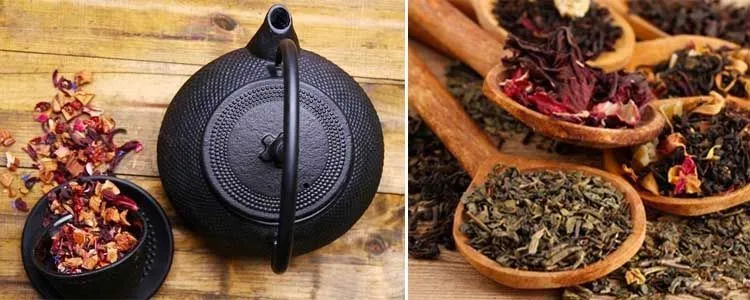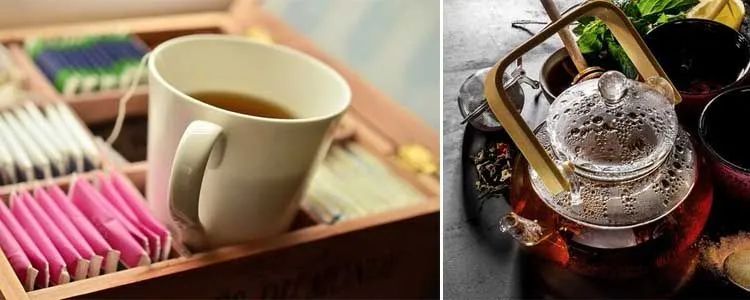Infusions have been part of the global culture of societies since the very beginning of time and in them we have not only found the pleasure of a rich drink, but often also the way to soothe pain or restore our health.
In the herbal teas Or herbal infusions can find their way to get the best healing and healthy properties, and many of these techniques are still considered excellent alternatives for the body.
Table of Contents
What is herbal tisane?
What is tisane?
It is a drink that takes the concept of herbal infusion a step further because in its combination it allows the inclusion of dried fruits, bark and other types of plants that are not common.
The herbal tisane it does not always have a medicinal objective, many times we make infusions of herbs to enjoy the taste of a drink. But at the same time, there have always been medicinal reasons for the realization of herbal tisanes.
There is a wide variety of possible herbal tisanes in the world. The type depends on the herbs and elements that we combine in the herbal infusion. Many times respecting recipes and traditions, other times looking for new flavors or health effects.

What herbs can you include?
There is a long list and a great variety of herbs and spices that can be included in the process of making a tisane. In addition, it depends on the objective or usefulness that is intended to be given to the infusion.
In the realization of tisanes the flavor can be left aside when the objective is mainly medicinal, while for a drink enjoying the flavor is the most important factor to achieve in the tisane.
For example, for a herbal tisane whose goal is to purge the blood and improve cholesterol, herbs can be taken into account to include such as garlic, turmeric, basil, coriander, nettle, milk thistle, dandelions, nim, cuscuta, etc.
Or, on the other hand, if the goal is to achieve a delicious drink, we can take into account for infusion herbs such as rhodiola, fennel, Scots pine, eleutherococcus, rosemary, yerba mate, mint, betonic, orange blossom.
There is really a great diversity of tisanes recipes to take into account, many depend on the culture that gave rise to them and in other cases we can find innovations.
Differences with other infusions
The main difference between tisane and other infusions, such as tea, lies at the boiling point of the water. Preparation is where we can find a fundamental difference.
Although all these techniques fall within the concept of infusions, in tisane the preparation boils the leaves and ingredients for a few minutes, while in tea and other similar drinks the hot water is poured over the leaves letting stand, without ever reaching the boiling point.
In tisane, by boiling the leaves along with water, the active ingredients of the different herbs. Tisane is a technique more related to medicine, but it is not exclusive to it.
It is from the boiling and cooking of the herbs that in the tisane we can use other plants that from the traditional infusions we could not drink. The process of tisane removes many substances harmful to the human body.
Benefits of tisanes
Herbal tisanes may have different medicinal objectives. Depending on the recipe we can abide by nausea, dizziness, stomach problems, some discomforts of pregnancy, lower cholesterol, seek to improve concentration and memory, treat colds, laryngitis or sore throats, soothe headaches and migraines, release the costipado.
There are also tisane recipes with a remarkable effect to relieve menstrual cramps. This can be a very effective organic and natural home remedy to relieve this type of pain.
Another very interesting effect of tisanes is to avoid breathing difficulties. With some special ingredients you can solve breathing problems. We will describe them in more detail below.
All tisanes are achieved from the use of herbs and it is for this reason that they become very organic and natu drinksrales, which do not have supplements or other artificial substances. This is a very important benefit compared to other types of medications.

Tisanes recipes
You can find different ways to how to prepare tisanes. These infusions not only depend on the ingredients you use, but also on the minutes of cooking you give it, in addition to other variables in the preparation.
The main method of preparation for tisanes is to boil the herbs along with the water and then separate the liquid from the solid remains. This is how we will get the drinks we expect and the best result.
An excellent and very popular recipe is How to prepare a digestive tisane? For this, very few ingredients are required to achieve this type of tisane.
There are three alternatives for digestive tisane, which are distinguished between chamomile, ginger and mint. All of them use their respective herbs.
- For each herb you should use a large tablespoon of water, the most appropriate ratio is 30 grams of ingredients per liter of water.
- Simply let it boil and rest for 15 minutes to strain the concoction.
Sage tisane is special for colds. This type of tisane also has a very soothing effect to soothe sore throats. On the other hand, sassafras is used to improve breathing difficulties.
Another very popular type of tisane is based on the rosemary plant for being an effective pain reliever of headaches.
Cinnamon tisane is an excellent painkiller for soothing menstrual cramps and cramps. This is perhaps one of the most sought after and made recipes for being an exceptional medicine and that has a completely natural origin.
